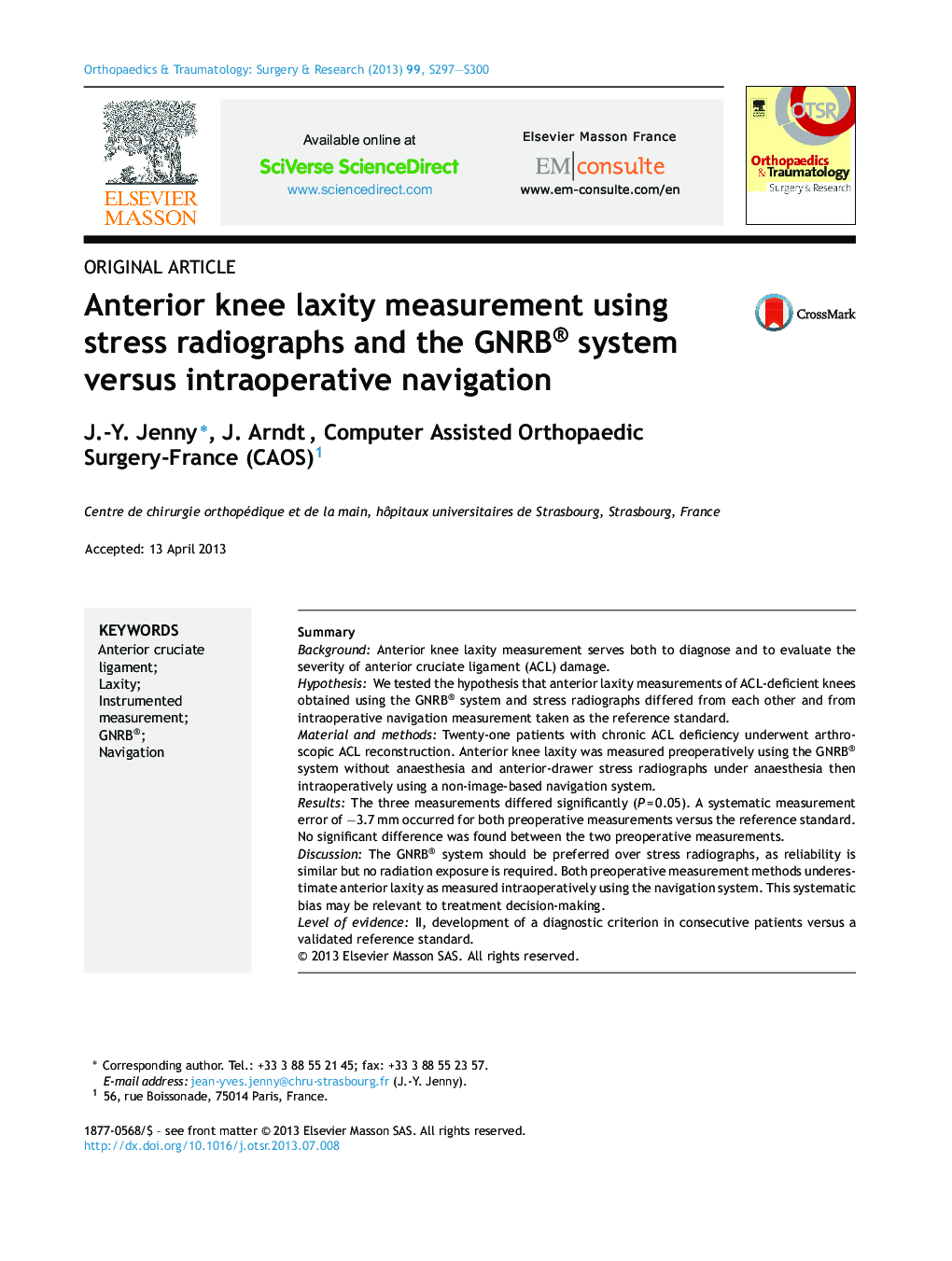| Article ID | Journal | Published Year | Pages | File Type |
|---|---|---|---|---|
| 4081600 | Orthopaedics & Traumatology: Surgery & Research | 2013 | 4 Pages |
SummaryBackgroundAnterior knee laxity measurement serves both to diagnose and to evaluate the severity of anterior cruciate ligament (ACL) damage.HypothesisWe tested the hypothesis that anterior laxity measurements of ACL-deficient knees obtained using the GNRB® system and stress radiographs differed from each other and from intraoperative navigation measurement taken as the reference standard.Material and methodsTwenty-one patients with chronic ACL deficiency underwent arthroscopic ACL reconstruction. Anterior knee laxity was measured preoperatively using the GNRB® system without anaesthesia and anterior-drawer stress radiographs under anaesthesia then intraoperatively using a non-image-based navigation system.ResultsThe three measurements differed significantly (P = 0.05). A systematic measurement error of −3.7 mm occurred for both preoperative measurements versus the reference standard. No significant difference was found between the two preoperative measurements.DiscussionThe GNRB® system should be preferred over stress radiographs, as reliability is similar but no radiation exposure is required. Both preoperative measurement methods underestimate anterior laxity as measured intraoperatively using the navigation system. This systematic bias may be relevant to treatment decision-making.Level of evidenceII, development of a diagnostic criterion in consecutive patients versus a validated reference standard.
